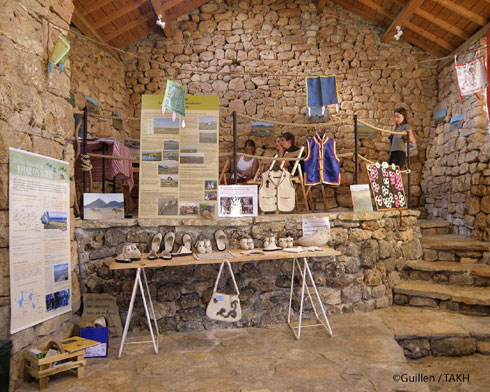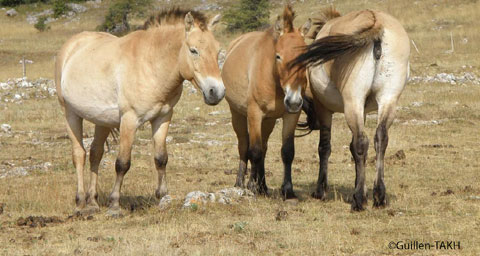The last wild equine, the Przewlski horse almost ended up forever behind zoo bars. Thanks to the NGO Takh, a herd is once again roaming the Mongolian steppe.
It was an audacious gamble. To recreate a herd of wild equids with a species that only existed in zoos in the early 70s. Yet this was the feat achieved by the Takh association, founded by Claudia Feh in 1990. Today, in western Mongolia's Khomiin-Tal region, a wild herd of Przewalski is once again galloping across the steppe. The last wild horse in the world, the Przewalski (takh or takhi in Mongolian), which you may have seen on the walls of the Lascaux caves, once roamed the plains of Central Asia and Europe. Discovered in 1879 by Colonel Przewalski in the Gobi Desert, at a time when scientists thought they had inventoried all mammals, it soon attracted a great deal of attention and soon found itself behind zoo bars.
Last seen
To capture a horse," explains Hélène Guillen, administrative and financial manager of the NGO Takh and the Villaret site, "zoo managers could kill the whole herd, because the horses would defend themselves against each other.
Human predation was compounded by strong competition from domestic herds and Mongolia's harsh winters. The last individual was spotted in 1969. Thereafter, Przewalski's horse was only seen in wildlife parks.
Three years after the creation of the Takh association, eleven Przewalski's horses from zoos were reintroduced into a 400-hectare park at Le Villaret in the Cévennes, with a view to their subsequent release in Central Asia. At the time, there were other reintroduction programs for the last wild equidae. But Claudia Feh's approach is different from that of other projects involving direct transfers of specimens from zoos to Mongolia.
"The Takh association provided for a period of adaptation," emphasizes Hélène Guillen. For ten years, the horses were left to their own devices, with no controls. In semi-liberty, they gradually recreated a herd and rediscovered the behaviors of their ancestors.
"Some of them had always been fed hay and had never grazed. Despite this, they rediscovered their instincts, and were soon eating the short grass of the Causse Méjean.
Causse and steppe have much in common

"There are similarities between the conditions of the Causse and the steppe. The summers are hot and dry, and the winters harsh and long. The horses were able to readapt to the snow," notes Hélène Guillen. But there was more to it than that. Mongolian winters are harsher than those on the Causses. Were the herds able to withstand temperatures of -50°C? to defend themselves against large predators like wolves?
The reintroduction was carried out by family, with a stallion, mares and their offspring. "It was very important not to separate individuals who had created close bonds that united them."
Twenty-two horses were flown in between 2004 and 2005. The animals were released in a fenced-in area of around 14,000 ha. To successfully re-establish this population, the NGO has adopted a "landscape approach", as recommended by the Convention on Biological Diversity, signed in Rio in 1992.
Nomads are part of the program
The nomadic population of Khomiin Tal has always been involved in the project. Today, Takh is running a "community development" project. "We're trying to develop alternative activities to livestock farming as a source of income for the locals. For example, we sell felt items made by the women of Khomiin Tal at Villaret," explains Hélène Guillen. Our aim is to enable herders to earn an income other than cashmere wool.
In the long term, for the horse population to multiply and find sufficient food resources, there needs to be sufficient pasture to accommodate both wild horses and domestic herds. "We therefore seek to find ways for breeders to adapt the size of their herds to the state of the pasture, while still earning a stable income.
We also organize an annual "summer scholl" for children during their vacation period, and have secured funding to set up a medical care center in Khomiin Tal."
Un ecovolunteering program
Since 2010, Takh has been calling on ecovolunteers. Currently, one volunteer is on site in Mongolia to observe the herd. This summer (2010) two volunteers are present in July and two in August at Le Villaret. Their role is to guide tourists and raise their awareness of the Przewlski horse's destiny.
Laurence Dupont
Przewalski's horse association : Takh
Tour du Valat
Le Sambuc
13200 ARLES
Tel: + 33 (0) 490 97 23 13
www.takh.org

